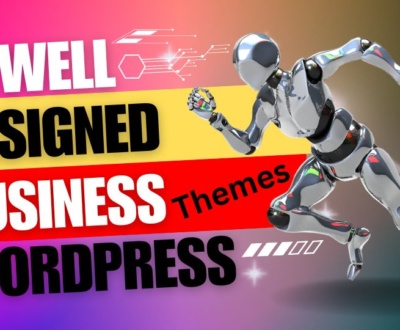How many times have you been lost on a website or come across pages that don’t make sense? If you want to boost the number of visitors to your site, make sure they don’t get lost. Have you ever been going through a long page only to realise halfway down that you missed something important? Perhaps you’ve come across a page with links that take you to other sites with no indication of what they’re about. How do you efficiently navigate pages?
There are a few things you can do to make your site’s navigation better. The trick is to figure out which strategy is most effective for your target demographic and stay with it. Here are some breadcrumb suggestions to make your website more user-friendly.
Include a full navigational path in your breadcrumb navigation
Breadcrumb navigation is an excellent technique to keep visitors on your site and informed. You may ensure that users can readily access the information they need by including the entire navigational path in your breadcrumb navigation. This not only makes your website more user-friendly, but it also makes it easier for your visitors to discover the information they require while on your site.
Breadcrumb navigation is easy to set up and may be tailored to your individual requirements. You can ensure that users can simply go to any page on your website by including the full path in your breadcrumb links. Breadcrumbs can assist you in swiftly and easily finding information on your website. Breadcrumbs are an easy way to add navigation to your pages if you’re using a content management system (CMS).
Consider which type of breadcrumb navigation makes the most sense for your site.
Breadcrumb navigation is a design feature that can make it easier for people to navigate a website. Hierarchical, functional, and contextual breadcrumb navigation are the three basic types of breadcrumb navigation.
The most frequent style of breadcrumb navigation is hierarchical breadcrumb navigation, which places all of the breadcrumb links at the top of the page. This is the ideal option for sites with a linear layout and a need to keep navigation orderly.
Users can choose a function from a list of alternatives, and the breadcrumb will display the page title that corresponds to that function. This is the greatest option for sites with a lot of pages and a desire to make navigating simple and user-friendly. The many sorts of breadcrumbs, such as “Home,” “Forum,” “Products,” and “Gallery,” are indicated by a series of icons in contextual breadcrumb navigation.
Keep your breadcrumb titles consistent with your page titles.
The consistency of your content is one of the most critical variables that might influence the performance of your website. When you write titles and breadcrumb titles that are consistent with the page titles, your readers will have a simpler time finding the information they need. This improves the readability of your information and makes it easier for your visitors to traverse your site.
Furthermore, if your page names are not consistent with your breadcrumb titles, it can be tough to identify the proper keywords for your page titles. This can result in lost visitors because they won’t be able to quickly discover the information they need. You can ensure that your breadcrumb titles and page titles are always consistent and easy to find by following a simple naming strategy.
Get creative with design
One of the most crucial components of any website is navigation design, which must be both user-friendly and visually beautiful. You may develop a website that is both educational and visually appealing by taking some creative liberties with your navigation.
One way to do this is to use a unique font and layout. Using different fonts and visuals to give your navigation a unique and eye-catching look is a great way to make it stand out. You may also use colour to complement your core design concept and give a more dynamic and engaging experience for your visitors. You can also use artwork to improve the overall look and feel of your menu. By being creative with your navigation, you may create a website that is both instructional and visually appealing.
Reduce bounce rate
The bounce rate is the number of times a user’s browser tab gets redirected to another page in a certain amount of time. It can be used to determine how well your website is working and whether or not it is mobile-friendly. Increased website conversion rates and higher client satisfaction are two of the benefits of lowering the bounce rate.
You can limit the number of times users have to redirect their browsers by making sure your website is easy to navigate and that all information is properly suited for mobile devices. This may result in a larger bounce rate, but it will also result in a happier consumer base. Keeping your website mobile-friendly can be a difficult chore, but with the right tools, you can ensure that your site is adequately responsive to various devices.
Keep it clean and uncluttered.
Have you ever spent more time attempting to figure out where you should be on a page than really doing what you came there to do? Because cluttered navigation can be a huge distraction and slow down your browsing speed, it’s important to avoid it. Not to add that it’s not very appealing to the eye. Sticking to a simple style is a wonderful method to keep your navigation clean and beautiful. This means avoiding any decorations or images in favour of simple, concise text. This will assist you focus on the information by making your page easy to read.
Also, employ effective menu layouts and labels so that people know where they are and what they can find. Finally, test your navigation designs in a variety of scenarios and browsers to ensure that they look and function as intended. No one knows how your users will engage with your material better than you, so play around with it until you find the right solution!
Progress from the highest level to the lowest.
There are numerous reasons to progress your navigation from the highest to the lowest level. One reason is that it might assist you in gaining a better understanding of how your website functions. You can resolve any difficulties that develop by understanding how your website works at the most fundamental level. You may also make your website more user-friendly by improving your navigation.
Your users will be able to find what they’re looking for more easily if you have a clear and unambiguous hierarchy. You may also maintain your website organised and consistent by designing well-organized navigation. Users will be able to navigate and discover the information they need more easily as a result of this. Finally, well-organized navigation might aid in improving the SEO ranks of your website. So, what are you waiting for? Today is the day to start improving your navigation and seeing the results for yourself!
Conclusion
Site navigation is undeniably one of the most critical features of any website. After all, if visitors can’t locate what they’re looking for, they’ll either abandon their search or give up entirely. We’ve compiled a list of breadcrumb tips that will make your site easier to browse for both website users and search engine crawlers in this blog post.
Our team of professionals can provide you with industry-specific guidance on how to improve your business by implementing cutting-edge technology. For experienced services at no additional cost, contact NR TECHSOL today.
About us and this blog
We are a digital marketing company with a focus on helping our customers achieve great results across several key areas.
Request a free quote
We offer professional SEO services that help websites increase their organic search score drastically in order to compete for the highest rankings even when it comes to highly competitive keywords.








